Shandong University of Traditional Chinese Medicine was founded in 1958. In 1978, it was identified as a national key Chinese medicine school. In 1981, it became a key university in Shandong Province. It is an excellent school in the undergraduate teaching level evaluation of the Ministry of Education, the Shandong Provincial People's Government and the National Traditional Chinese Medicine Administration. The bureau jointly builds traditional Chinese medicine colleges, Shandong Province's famous schools for training applied basic talents, Shandong Province's provincial civilized campuses, Shandong Province's high-level disciplines and high-level universities. The school has the most national key disciplines among provincial universities. It is among the first batch to be authorized to obtain master's and doctoral degrees. It is among the first batch to undertake the national "973" project. The number of master's degree programs ranks among the top among similar institutions in the country. The school adheres to the guidance of Xi Jinping Thought on Socialism with Chinese Characteristics for a New Era, adheres to the "two establishments" and achieves the "two safeguards". It closely focuses on the fundamental task of cultivating moral character and cultivating people, adheres to the direction of socialist school running, and fully implements the party's education policy, adhering to the school motto of "being virtuous and benevolent, being erudite and practicing sincerely", adhering to the school-running characteristics of "being educated, solid foundation, focusing on inheritance, and being brave in innovation", inheriting the essence, keeping integrity and innovation, educating people for the party and educating talents for the country. Over the past sixty years, generations of people have worked hard and unremittingly to cultivate more than 100,000 professionals in traditional Chinese medicine and health services, and the comprehensive school strength and social influence have been significantly improved. In 2007, the school moved from the main body of Lixia District, Jinan City, to Changqing, the hometown of Bian Que, with a total area of 2,182 acres and a construction area of 680,000 square meters. There are more than 23,000 full-time students, including more than 18,000 undergraduates and nearly 5,400 graduate students. The library has a collection of 3.021 million books and 78 electronic books.With more than 90,000 volumes and nearly 30,000 rare ancient books, the "Shandong University of Traditional Chinese Medicine Ancient Books Digital Library" database platform has been built and is open to the public. It is a key ancient book protection unit in Shandong Province. The school has 17 teaching institutions, 5 scientific research institutions, and 4 teaching auxiliary institutions. There are 3 directly affiliated hospitals, including the Affiliated Hospital of Shandong University of Traditional Chinese Medicine, the Second Affiliated Hospital of Shandong University of Traditional Chinese Medicine, and the Affiliated Eye Hospital of Shandong University of Traditional Chinese Medicine. Non-directly affiliated hospitals and 31 teaching hospitals. There are currently 16 joint graduate training bases in Shandong Province, 17 national standardized training bases for TCM residents, 1 national experimental teaching demonstration center, and 1 national off-campus practical education base for college students. The school adheres to a solid foundation, focuses on characteristics, and strives to cultivate high-quality traditional Chinese medicine talents. There are currently 35 undergraduate majors, involving medicine, science, liberal arts, engineering, management, law, education and other disciplines, 27 provincial first-class undergraduate majors, including 10 national first-class undergraduate majors, and 17 national first-class undergraduate courses. There are 3 first-level disciplines conferring doctoral degrees, 9 first-level disciplines conferring master’s degrees, and 3 national key disciplines. Traditional Chinese Medicine was selected as the “Peak Discipline” of Shandong Province, Traditional Chinese Medicine and Integrated Traditional Chinese and Western Medicine were selected as the “Advantage and Characteristic Disciplines” of Shandong Province, and Biomedical Engineering was selected as the “Cultivation Discipline” of Shandong Province. In the 2021 Ranking of the Best Subjects in China by Ranke, Traditional Chinese Medicine ranked 6th, Integrated Traditional Chinese and Western Medicine ranked 5th, and Clinical Medicine, Pharmacology and Toxicology ranked among the top 1% of ESI globally. It has successively won the top 50 universities with typical experience in innovation and entrepreneurship in the country, the championship of the second national "Huangdi Neijing" knowledge competition finals, the gold medal of the fourth and eighth China International "Internet +" College Student Innovation and Entrepreneurship Competition, and the first national Chinese and Western Medicine for College Students. Special Prize for Team in Clinical Skills Competition. Won the first prize in the China University Student Service Outsourcing Innovation and Entrepreneurship Competition for three consecutive years. A group of outstanding students have emerged successively who have won the titles of "China Youth May 4th Medal", "National Three Good Students", "China University Student Self-improvement Star Model", and "Shandong University Student Top Ten Entrepreneurial Stars". The school adheres to the principle of putting teachers' ethics first and leading by talents, and builds a strong and talented teaching team. There are currently 236 doctoral supervisors, including 85 part-time supervisors, and 1,019 master's degree supervisors, including 490 part-time supervisors. 4 people have won the honorary title of "Masters of Traditional Chinese Medicine", 5 people have been awarded the "National Famous Traditional Chinese Medicine Doctors", 5 people have been "Qihuang Scholars", 6 people have been awarded the "Young Qihuang Scholars", 2 people have won the National Award for Outstanding Contribution to Traditional Chinese Medicine, and the chief scientist of the "973" project 1 person, 8 national outstanding teachers, 2 national famous teaching teachers in colleges and universities of traditional Chinese medicine, 2 "Taishan Scholar" climbing plan experts, 11 "Taishan Scholar" distinguished experts, 1 "Taishan Scholar" industry leading talent, "Taishan Scholar" There are 19 young experts "scholars", 25 young and middle-aged experts with outstanding contributions at the provincial and ministerial levels, 53 experts enjoying special allowances from the State Council, 2 selected into the "National University Huang Danian Teacher Team", and won the second prize of the National Teaching Achievement Award for two consecutive years. , won 72 teaching achievement awards at or above the provincial level. The school adheres to technology-driven and collaborative innovation to promote scientific research and innovation to achieve fruitful results. There are currently 3 postdoctoral research stations for traditional Chinese medicine, traditional Chinese medicine, and integrated traditional Chinese and Western medicine, 1 key laboratory of the Ministry of Education, 1 national clinical research center for cardiovascular diseases of traditional Chinese medicine, 3 national-level regional traditional Chinese medicine diagnosis and treatment centers, and 6 It has a third-level key laboratory of the State Administration of Traditional Chinese Medicine, two key research laboratories of the State Administration of Traditional Chinese Medicine, two national academic school inheritance studios, a national clinical research base of traditional Chinese medicine, and a national major new drug creation platform (Shandong) traditional Chinese medicine unit platform. There are 34 provincial-level scientific research and innovation platforms, including Shandong Provincial Key Laboratory and Shandong Provincial Engineering Technology Research Center. Since the "13th Five-Year Plan", it has undertaken more than 1,370 scientific research projects at or above the department and bureau level, including 176 national-level projects. In 2018 and 2019, it was the first to win the second prize of the National Science and Technology Progress Award for two consecutive years, and won the first prize of Shandong Province Science and Technology Progress Award in total. 6 awards. Since the establishment of the school, a total of 35 scientific research achievements have won first prizes at the national, provincial and ministerial levels. The school adheres to the integration of science and education, industry and education, and actively integrates into major national and local strategies. Signed a strategic cooperation agreement with Jinan City to build the Scientific Research and Innovation Building of Shandong University of Traditional Chinese Medicine. Together with Jinan City, Macau University of Science and Technology, and Nanyue Group, we established the Lu'ao Traditional Chinese Medicine Industry Research Institute to create an international cooperation center in the fields of traditional Chinese medicine quality research, new traditional Chinese medicine drugs, and product series research and development. Together with Qingdao City, we will build the Qingdao Academy of Traditional Chinese Medicine, Qingdao Ocean Research Institute of Traditional Chinese Medicine, and the affiliated Qingdao Hospital to create a high-level talent training base, an important scientific research and development base, and an advanced medical service base in the field of traditional Chinese medicine. Promote the collaborative innovation of industry, academia and research, and establish the Nanyang Pharmaceutical Research Institute and the world's first graphene medical research institute. With local governments such as Dezhou City and Tai'an City, with the Provincial Food and Drug Administration, the Provincial Academy of Pharmaceutical Sciences and other departments, with Nanjing University of Traditional Chinese Medicine, Huanggang Normal University and other institutions, with Lunan Pharmaceutical, Dong'e Ejiao, Shandong Jianbang Group, etc. The company signed a series of strategic cooperation agreements, and the school was selected as a new round of comprehensive pilot units for the transformation of scientific and technological achievements, striving to transform the advantages in education and teaching, scientific research, traditional Chinese medicine culture, and medical services into innovation and development advantages in the health industry. The school insists on educating people with culture and culture, and actively creates a distinctive cultural brand. Give full play to the "three business cards" advantages of "Qilu culture, Bian Que's hometown, and the birthplace of acupuncture" to create a unique university cultural character. By organizing the Nishan World Traditional Chinese Medicine Forum, the China (Changqing) Bianque Traditional Chinese Medicine Culture Festival, the International Forum on the Inheritance and Development of Bianque Culture and Traditional Chinese Medicine Classics, the 6th Traditional Chinese Medicine Science Conference, the 7th World Conference on Integrated Traditional Chinese and Western Medicine, and the first Jinan Bian Que Forum is known as the cultural brand of "Bian Que's Hometown". By hosting the national "Taishan on Moxibustion" academic conference, we have widely promoted appropriate moxibustion techniques. The first "Yishan Health Conference·TCM Health Conference" was held to gather strong synergy for the high-quality development of traditional Chinese medicine. The country’s first provincial-level collaborative innovation center for traditional Chinese medicine culture was established and became a demonstration collaborative innovation center for higher education institutions in Shandong Province. The first Chinese medicine think tank in the province was approved and the Confucian Medical Culture Research Association was established. The academic office of the "Chinese Medical Collection", the largest and most systematic collection and protection project of ancient Chinese medicine books since the founding of the People's Republic of China, is affiliated with our school. Focusing on the dissemination of traditional Chinese medicine culture, the Shandong Provincial Traditional Chinese Medicine Museum has been approved as a national traditional Chinese medicine cultural publicity and education base, a Shandong traditional Chinese medicine cultural tourism demonstration base, and a Shandong provincial social science popularization education base. . The school insists on openness in running schools and external exchanges, and constantly promotes traditional Chinese medicine to "go global." It has established cooperative relationships with nearly 200 higher education and medical research institutions in the world to carry out exchanges and cooperation related to traditional Chinese medicine, among which there are more than 40 active and close international partners. The school is an affiliated unit of the World Federation of Acupuncture’s External Relations Working Committee and the World Federation of Traditional Chinese Medicine’s Professional Committees on External Treatment, Pulse, Internal Medicine, and Anti-Virus. It is responsible for the “National Traditional Chinese Medicine Service Export Base”, “China-Poland Traditional Chinese Medicine Center” and “China-Poland Traditional Chinese Medicine Center”. National high-level foreign exchange platform construction tasks such as the Nepal Traditional Chinese Medicine Center, the International Cooperation Base for External Treatment of Traditional Chinese Medicine, and the International Cooperation Base for Optometry and Myopia Prevention and Control with Integrated Traditional Chinese and Western Medicine. The school adheres to the principle of sincerity, morality and benevolence as a great doctor, and continuously improves the health service capabilities of traditional Chinese medicine. The affiliated hospital is a national model traditional Chinese medicine hospital, a national traditional Chinese medicine clinical research base, a national traditional Chinese medicine inheritance and innovation project construction unit, a national drug clinical trial institution, a national traditional Chinese medicine examination work base, a national traditional Chinese medicine epidemic prevention and treatment base, and one of the first batch of national traditional Chinese medicine training bases. National Traditional Chinese Medicine Inheritance and Innovation Center, National Advanced Stroke Center, National Regional Medical Center Output Hospital. The Second Affiliated Hospital is the first provincial hospital of integrated traditional Chinese and Western medicine in Shandong Province. It has been identified as the province’s quality control center for TCM treatment and rehabilitation. It took the lead in establishing the Shandong Province TCM Alliance for TCM Treatment and Rehabilitation. It promoted the construction of the TCM Rehabilitation Alliance and initiated projects. The construction project of the comprehensive geriatric medicine building integrating traditional Chinese and Western medicine has been approved as the construction unit of the national "flagship" hospital pilot project for the collaboration of traditional Chinese and Western medicine. The Affiliated Eye Hospital has been approved as the first tertiary-level specialist eye hospital in Shandong Province, an international cooperation base for optometry and myopia prevention and control with integrated traditional Chinese and Western medicine, one of the first batch of national key clinical specialties, and a key laboratory for the prevention and treatment of eye diseases with integrated traditional Chinese and Western medicine in Shandong Province. , National Eye, Ear, Nose and Throat Diseases Clinical Medical Research Center Shandong Branch Center, Shandong Provincial Optometry Quality Control Center, Shandong Provincial Clinical Medical Research Center, Shandong Provincial Development and Reform Commission Engineering Research Center, Shandong Provincial Traditional Chinese Medicine Specialty Hospital. The school adheres to the guidance of Xi Jinping Thought on Socialism with Chinese Characteristics for a New Era, actively promotes the connotation construction and high-quality development of the school, and strives to cultivate high-quality Chinese medicine talents, promote the creative transformation and innovative development of Chinese medicine culture, and serve "Healthy China" and the new era. In the journey of building a modern and powerful socialist province in the era, it has shown a new atmosphere, achieved new achievements, and strived to write a new chapter in the construction of a first-class university of traditional Chinese medicine in the country.
-

Tsinghua University
-

Peking University
-

Fudan University
-

Wuhan University
-

Zhejiang University
-

Nanjing University
-

Sun Yat-sen University
-

Tongji University
-

Renmin University of China
-

Jahrom University of Medical Sciences
-

Technological Institute of Tlaxcala Plateau
-

Golfo University
-
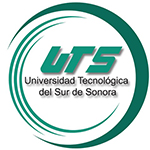
Technological University of South Sonora
-
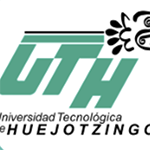
Technological University of Huejotzingo
-
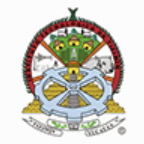
Tizimín Institute of Technology
-
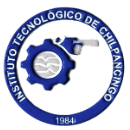
Chilpancingo Institute of Technology
-

Technological Institute of Boca del Rio
-
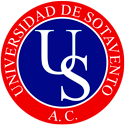
University of Sotavento
-
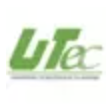
Technological University of Tulancingo
-

Valle del Grijalva University
-

Technological University of Nezahualcoyotl
-
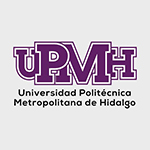
Metropolitan Polytechnic University of Hidalgo
-

Villahermosa Institute of Technology
-

Instituto Tecnologico de Tapachula
-

Technological Institute of Parral

